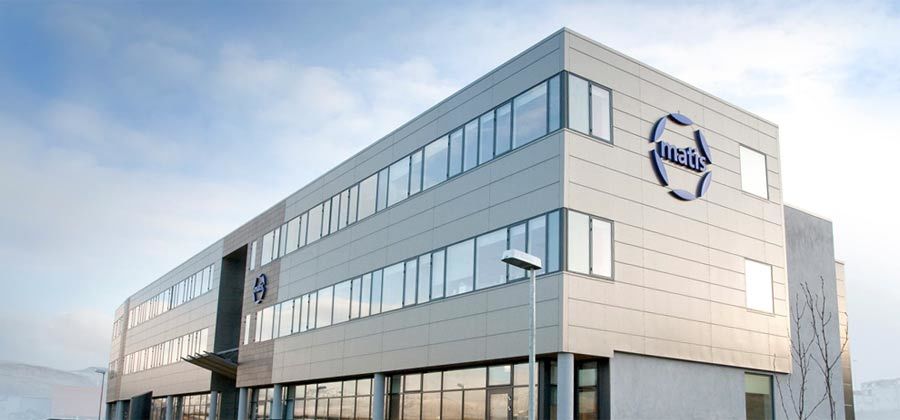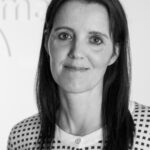The aim was to develop and evaluate a Quality Index Method (QIM) scheme for fresh cod fillets. Cod fillets were stored at 0–1 ° C on ice up to 14 days. Total viable counts (TVC) and counts of H2S-producing bacteria were done. A QIM scheme for fresh cod fillets to evaluate freshness was proposed. A high correlation between the Quality Index (QI) and storage time on ice was found. The remaining storage time could be estimated with accuracy of ± 1.3 days when the cod fillets were evaluated with QIM. The maximum storage time was estimated 8 days based on Quantitative Descriptive Analysis and H2S-producing bacteria counts.
Author: admin
The effect of hemoglobin from Atlantic cod (Gadus morhua) and Arctic char (Salvelinus alpinus) on formation of volatile compounds in washed cod model system was studied by GC analysis during chilled storage. Pro-oxidative effect of cod hemoglobin compared to char hemoglobin was observed as higher initial levels of hexanal, cis-4-heptenal and 2,4-heptadienal contributing to higher rancid odor sensory scores. This was in agreement with TBARS and changes in color indicating faster initial oxidation catalyzed by cod hemoglobin. The aldehydes appeared to decline towards the end of the storage time in agreement with TBARS; however, levels of 2,4-heptadienal were considerably higher after 4 days of storage in the arctic char hemoglobin catalyzed system.

Matís (Matvælarannsóknir Íslands) is working on projects that will benefit Icelandic exporters in meeting Tesco's requirements for carbon dioxide labeling of food.
Tesco, one of the UK's largest retail chains, intends to carbon label all products sold in the chain's stores in order to enable consumers to obtain information on the amount of carbon dioxide emissions that have accompanied the product's production, transport to the store and sales. This is Tesco's program aimed at responding to climate change.

Sveinn Margeirsson, department manager at Matís, says that the discussion on carbon dioxide labeling of food is part of the discussion on sustainable development. "Matís manages a West Nordic project called 'Sustainable Food Information', which aims to make it easier for companies in the food industry, such as fisheries companies, to demonstrate sustainability in fishing, processing and sales. Participants in the project will meet in Iceland on 14 June with Icelandic and Faroese fisheries companies, where the topic of discussion is the opportunities that lie in sustainable development for the Icelandic fisheries. "
Sustainable development important for the Icelandic food industry

"Sellers and consumers demand that it can be demonstrated that the production of marine products is in such a way that fish stocks are not depleted or that large emissions of carbon dioxide (CO2) accompany the production. The Tesco program is simply one of many examples of developments in this area. It is my opinion that sustainable development will be one of the key issues for the Icelandic food industry in the future, as we have more projects in this field in the pipeline. ”
Sveinn says that in this connection it is important to be able to show how the product has gone through the value chain, otherwise it is not possible to say how much the "life cycle" of the product has increased the amount of carbon dioxide in the atmosphere.
"It's not enough to focus on one link in the value chain. In the UK today, there is considerable debate about carbon dioxide emissions from the transport of organically grown fruit from distant parts of the world. Are the environmental effects of such foods positive or negative? One way to compare foods in this regard is the so-called life cycle analysis (LCA). In order to be able to apply it, it is necessary to be able to trace the product's path through the value chain, where Icelandic fisheries companies are well positioned. One of the practical possibilities of this strong position is to be able to demonstrate the carbon dioxide emissions associated with the production of the products. "

There is great interest in an international workshop on sustainability in the fisheries sector, which will take place in Sauðárkrókur on 14 June. About 20 people from companies in the Faroe Islands are expected to come to Iceland in connection with the workshop. The workshop is part of a West Nordic project called "Sustainable Food Information", which aims to make it easier for companies in the food industry, such as fisheries companies, to demonstrate sustainability in fishing, processing and sales.
Consumers abroad are increasingly demanding that seafood sellers base their fishing on sustainability; that marine resources are not depleted and that pollution from fishing, processing and transport of marine products is kept to a minimum. Products based on sustainability are therefore very important for manufacturers in the future because they are tickets to high-quality or expensive retail chains abroad.

Great emphasis is also placed on traceability in the discussion on sustainability in the fishing industry. Traceability provides accurate information about the product and sellers who have a quality product can differentiate themselves better from others in the market. Traceability is therefore an important link in the eco-labeling of marine products.
More about the workshop here.

Crowds have made their way to the Festival of the Sea on the central bank in Reykjavík this weekend. There, companies and institutions present their activities and services to guests. Among the things on offer in the middle bank is a so-called sensory assessment at Matís (Matvælarannsóknir Íslands) where guests are given the opportunity to guess the smell from scented glasses and look at different old fish, on the one hand new and then on the other hand a few days old, with regard to freshness, texture and smell.
Sensory evaluation is an essential part of food quality control. In sensory evaluation, the human senses, i.e. visual, olfactory, taste, hearing and touch senses used to assess food quality. Sensory evaluation is not only used in food but also in connection with the development of perfumes, hygiene products and in the automotive industry, for example.

The festival of the sea ends this afternoon, Sunday.
Photo: Guests inspect fish of different ages at Matís' booth at Hátíð hafsins.
Genotyping Kits for Cod / Genotyping kits for Atlantic cod
The aim of the project was to develop new coding sets for cod (Gadus morhua) based on repeated DNA short sequences (microsatellites). A total of 118 genetic markers were studied. Two ten genetic marker kits have been developed (CodPrint10a and CodPrint10b) and a patent application has been filed for these genetic markers. Almost 300 Icelandic samples belonging to 3 different sampling areas (N-Iceland, SW-Iceland (shallow waters) and SW-Iceland (deep) were analyzed with these 20 genetic markers, but for comparison the samples were also analyzed with nine well-known and widely used genetic markers. These three sample groups were better distinguished by CodPrint10a and CodPrint10b genetic markers than by previously known genetic markers, and the research shows that the new genetic markers are suitable for both stock studies and parental analyzes.
The goal of the project was to develop new genotyping kits for Atlantic cod (Gadus morhua) based on microsatellite markers. A total of 118 markers were analyzed. Two 10 microsatellite markers sets were developed (CodPrint10a and CodPrint10b) and they were used to analyze approximately 300 samples that were collected in the Northeast Iceland, Southwest inshore Iceland and Southwest offshore Iceland. As a comparison the samples were also analyzed with nine previously known markers. A comparison of the new microsatellite loci and the nine previously used, showed that the power of individual discrimination was much stronger with the new microsatellite loci. Indeed, the discrimination of the samples was clearer with much less overlap of the individuals. Together, these results suggest that the new microsatellite loci are powerful and suitable for both population genetic analysis and paternity analysis, due to their high polymorphism and resolution power.
View report
QALIBRA-Heilsuvogin. First Annual Report
This report is the first annual report of the European project QALIBRA and covers the period from 1 April 2006 to 31 March 2007. QALIBRA, or “Quality of Life - Integrated Benefit and Risk Analysis. Webbased tool for assessing food safety and health benefits, ”abbreviated QALIBRA (Heilsuvogin in Icelandic), is the name of a European project, which falls under Priority 5, Food Quality & Safety in the 6th EU Research Program. This is a three-and-a-half-year project managed by the Fisheries Research Institute (now Matís ohf). The project manager is Helga Gunnlaugsdóttir, department manager at Matís. The aim of the QALIBRA project is to develop quantitative methods to assess both the positive and negative effects of food ingredients on human health. The aim is for these methods to be presented in a computer program that will be open and accessible to all stakeholders on the World Wide Web. Participants in the project are from Iceland, the United Kingdom, the Netherlands, Greece, Portugal and Hungary.
This is the first periodic activity and management report for the project QALIBRA - “Quality of life - integrated benefit and risk analysis. Web - based tool for assessing food safety and health benefits ”. The report covers the period from 01.04.06 to 31.03.07. QALIBRA is partly funded by the EC's Sixth Framework Program, Priority 5, Food Quality & Safety. It began in April 2006 and will end in 2009. The objectives of QALIBRA are to develop a suite of quantitative methods for assessing and integrating beneficial and adverse effects of foods and make them available to all stakeholders as web-based software for assessing and communicating net health impacts. The participants in the project are: Matís, Iceland, coordinator, Central Science Laboratory, United Kingdom, National Institute of Public Health and The Environment, The Netherlands, Wageningen University, The Netherlands, University of Patras, Greece, Altagra Business Service, Hungary, National Institute for Agriculture and Fisheries Research, Portugal.
View report
Results of measurements of the meat content of pork
In the autumn of 2004, Matra's experts worked on researching the meat content of pork carcasses in Iceland with the aim of examining the possibilities of introducing electronic assessment of pork carcasses. The results were published in Matra report number 04:08 2004. It stated that an assessment of fat and muscle thickness at certain measuring points was unfinished, which was necessary to examine the variability of Icelandic pigs within the population as well as between individual farms. It would then be necessary to evaluate the results obtained from the evaluation of a certain number of pigs and compare them with the corresponding evaluation of Norwegian pigs. The results of the audit that this report deals with show that the conditions in this country are such that it is possible to implement electronic pig meat assessment in a good way. This is confirmed, among other things, by the opinion of the Norwegian chief meat assessment, which was our support and trust in this matter. It is also confirmed by measurement results that the variability of the Icelandic pig population is so small that there is no significant deviation even though the same calculation formula is used, according to measuring instruments, for all pigs.
View report

A few days ago, a small group of employees from Lýsir hf. on a course in sensory assessment at Matís. The aim of the course was to train the employees in methods for assessing the quality of fish oil.
The course covered sensory assessment, basic flavors and sensory assessment methods, and the staff also received practical training in the use of methods for assessing the smell and taste of fish oil.
Sensory evaluation is a systematic evaluation of the smell, taste, appearance and texture of food.
Sensory Evaluation is a necessary part of quality control. In sensory evaluation, the human senses, i.e. visual, olfactory, taste, hearing and touch senses used to assess food quality. Sensory evaluation in the Icelandic food industry has for a long time been conducted in an organized manner, especially as part of quality control.
For many years, Matís has assisted companies in setting up sensory evaluation, provided advice in sensory evaluation and carried out shelf life research in cases where sensory evaluation is a very important factor.

Those companies that are interested in using this Matís service are advised to contact Emilía Marteinsdóttir by phone: 422 5032 or by e-mail emilia.martinsdottir@matis.is

Iceland is a member of the European Network of Excellence on the chemical content of food and means of disseminating information through databases and the Internet. The project is called EuroFIR and is part of the EU's 6th Framework Program. Matís manages the Icelandic part of the project and now there is a two-day meeting in the project, which is held at Matís' premises on Skúlagata 4. The meeting discusses bioactive substances in food, but work is being done on a special European database on these substances.
Hannes Hafsteinsson, project manager at Matís, will take care of this part of the project and chair the meeting.

The project EuroFIR (European Food Information Resource Network) started in 2005 and ends in 2009 and the participants are 40 institutions from 21 European countries, but the project is supervised by the Institute of Food Research in Norwich in the UK. The aim of the project is to build a comprehensive and accessible database on the ingredients of European foods, in terms of their nutritional value and recent bioactive substances that may have health-promoting effects.
Matvælarannsóknir Keldnaholt (Matra) was originally the Icelandic participant and Matís has now taken on this role. A co-operation network was established in Iceland for the project with the participation of IFL (now Matís), the Laboratory of Nutrition at the University of Iceland, the Public Health Institute, the Environment Agency and Hugsjár ehf. Ólafur Reykdal, Matís, is the project manager of the Icelandic section.
Some of the objectives of the EuroFIR project are:
Harmonization of European databases on the chemical content of foods.
Data globalization.
Increased data quality and Europe will be a world leader in this field.
The importance of the project for Icelanders lies in the following factors:
The project strengthens Icelanders professionally by direct comparison with what is done abroad.
Increased demands will be made on data on the chemical content of food and this will benefit users (consumers, industries, researchers, schools, etc.). Working with food traditions and bioactive substances can shed light on the uniqueness of Icelandic food. Relations with foreign researchers and institutions are important.
The project is a good example of the need for domestic parties to join forces to participate in large foreign projects.
Iceland participates in work on six sub-projects of the EuroFIR project:
1. Development, coordination and networking of databases on the chemical content of foods.
Methods for evaluating the composition of processed foods.
3. Composition and production of traditional foods
4. Evaluation of bioactive material data.
The Icelandic database on the chemical content of food (ÍSGEM) was a key factor when working on getting into the project. The development of the database began at the Agricultural Research Institute in 1987, but is now stored at Matís.
Further information on the EuroFIR project can be obtained from Ólafur Reykdal and Hannes Hafsteinsson.EuroFIR website



